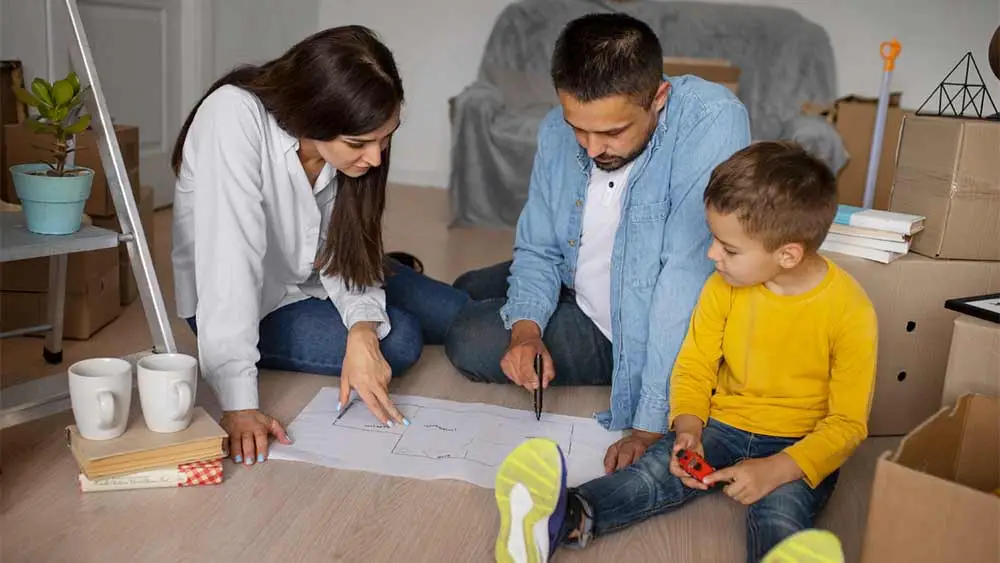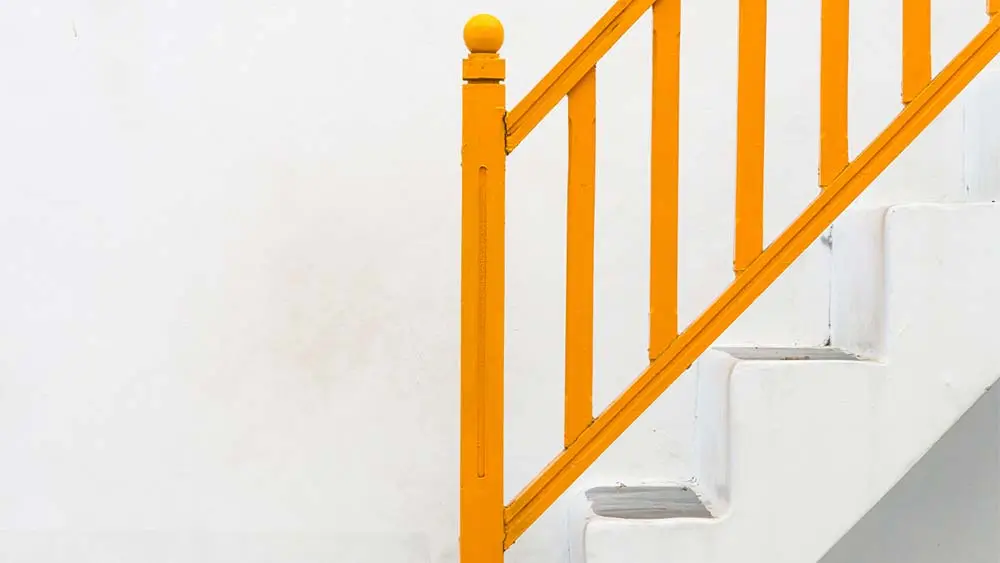Home Safety Checklist: Top Tips to Protect Your Loved Ones and Property

Whether it’s natural disasters, burglaries, or even common accidents and injuries – there’s a lot that goes into making your home a safe haven for your family. How many home safety tips have you checked off on HighStuff’s home safety checklist?
You might assume you’re living in safety but disaster can strike any moment unannounced! Not to scare you but there are so many ways your home, property, and your loved ones are vulnerable. It could be a natural disaster like an earthquake, extreme weather events, theft, or burglary. Heck, even common consumer products and household items deemed safe cause millions of injuries and accidents every year!
According to the U.S. Consumer Product Safety Commission, stairs, ramps and floors alone resulted in 2.7 million injuries in 2021! Other products on the list include beds, chairs, mattresses, soaps and detergents, cooking ranges, outdoor grilling, bicycles, bathroom fixtures, and even clothing. Similarly, extreme weather events such as snowstorms, heat waves, floods, thunderstorms, etc. also caused over 1,667 injuries and 974 deaths in the last couple of years.
Needless to say, homeowners need to up their game when it comes to home safety. Wondering how to do that? Here is the ultimate home safety checklist you need to protect your loved ones and property!
The Ultimate Safety Checklist for Home To Prepare for Disasters and Live Safely!
A home is much more about decorating your space to make it pretty. The first priority is to make sure it is safe from all possible scenarios. After all, you can only live peacefully and relax in your home once you know it is secure for all your loved ones. Here are top 40 important healthy home maintenance checklist items you need to know!
1. Protection Against Natural Disasters and Extreme Weather Events

By incorporating measures for disaster readiness into your home safety routine, you can mitigate potential risks and minimize property damage remediation in the face of extreme weather events, etc. Check off these tips to ensure home safety against natural disasters.
- Flood proof your home by installing a sump pump and periodically check if the batteries are working properly.
- Place all appliances and electrical components 12 inches to 15 inches above your house’s flood elevation levels.
- Get protection against hurricanes and extreme winds by covering the windows with permanent shutters or plywood.
- Regularly trim all dead and weak branches of nearby trees to mitigate the risk of them falling on your house.
- In case of tornadoes and earthquakes, make sure to secure heavy furniture like cabinets and bookcases to prevent them from toppling over.
- Always inspect the roof before and after rain & snow storms. Fix any leaks and check the stability of the roof. Cleaning the gutters and drain pipes is also essential for roof maintenance and preventing water damage.
- It is also better to learn a few quick electric repairs for emergencies because power outages are common during extreme weather.
- Additionally, make sure to have an emergency food and water supply to prepare for climate disaster events in advance.
2. Fire and Burn Safety Tips

Fire is one of the biggest hazards in a home. It can come from many sources; from getting burnt while cooking to electrical short circuits during quick DIY projects, here are some tips you need to follow to fireproof your home.
- Install high-quality smoke detectors and alarms in your home.
- Make sure there are carbon monoxide detectors, especially in sleeping areas.
- Regularly check if they’re working properly and replace batteries if needed.
- Place fire extinguishers strategically around your house, especially in the kitchen.
- Pay special attention to outdoor grilling safety during summer BBQ events. Only use the grill outside, never inside.
- If you’re using gas, make sure the cylinder is not leaking. If you smell the gas during cooking, get away from it immediately.
- If you’re using a charcoal grill, it tends to stay hot for hours after the cooking is done so make sure you place a cover on it and avoid putting any combustible objects near it.
- Teach the kids about grilling safety beforehand.
- Install a fire sprinkler system in the house to quickly quell fires and stop them from spreading.
- A fire-damaged home requires additional repairs and safety procedures. Make sure to call specialized companies to assess damages and remodel the house after a fire.
3. Home Safety Tips for Children

Children are most liable to getting injured, not only from weather events but also from common household products. If you have a child in your home, you’ll need to do the following things to ensure that it is a safe place for them.
- Especially pay attention to your child during bath time. In fact, it is better to remodel your bathroom to make it safer for children.
- Place non-skid mats and non-slip strips in the shower and bathtub to avoid the risk of falls.
- Store all medicines, cleaning products, and other such chemicals in a higher cabinet secured with a lock.
- You might even want to install latches on cabinet doors to keep the child from opening them and potentially hurting themselves.
- Similarly, install self-latching doors on the top and bottom of the stairs.
- Put plastic covers on power outlets and plugs.
- Avoid using any frayed cords and loose plugs and immediately repair.
- Place window guards and safety nets on balconies, decks, landings, and windows, etc.
- Cover sharp edges of furniture with a soft cushion.
4. Modify Your House to Ensure Safety for the Elderly and the Disabled

Senior citizens and disabled people are also more vulnerable to injuries and accidents, even in their own homes. Follow this home safety checklist to ensure greater safety for these groups of people.
- According to a report, most elderly injuries are credited to stairs, railings, concrete floors, outdoor structures, and features. Therefore, make sure you pay special attention to these aspects when preparing a home for senior people to live in.
- Install stair lifts, handrails, and wheelchair ramps around the staircase and ladders.
- Avoid putting carpets on the floors. If you do put them, make sure they are not loose and secure them to their place.
- Clean the house and remove any clutter that they might trip on.
- Get a low bed or use bedrails to avoid potential falls.
- Ensure good non-glare lighting around the house so that they can see clearly.
- Teach them to use panic alarms and other easy-to-use emergency signals in case of first responder events so that they can call for help quickly.
- Install LED flash light alarms for the hearing impaired.
5. Enhancing Home Security Measures

Here are key steps you can take to enhance your home security.
Safeguard your valuables in a fireproof safe. While they may not pose an immediate danger, losing original copies of documents like passports, wills, and birth certificates can be problematic. In addition, you may want to store other items like spare keys and titles to your vehicles, investment information, and even an external hard drive with copies of family photos.
Install reliable security systems such as setting up alarm systems, surveillance cameras, motion sensors, and access control mechanisms to monitor and alert homeowners about any unauthorized access or suspicious activities.
Implement smart home technology and ensure safety during home renovations by utilizing smart devices and automation systems to remotely control and monitor security systems, including door locks, lighting, and cameras, through smartphone applications or voice commands. Additionally, implementing temporary safety measures to protect construction areas and maintain a secure environment.
Improve outdoor lighting to deter potential intruders and increase visibility around the property, including motion-activated lights and well-lit pathways.
Get specialized Firearms or Gun Safes. They play a crucial role in enhancing home security by providing a dedicated and secure storage solution for firearms. The relationship between gun safes and home security is multifaceted and interconnected. It is important to choose a gun safe that meets your specific needs, considering factors such as size, locking mechanism, fire protection rating, and ease of access.
6. Important Home Security System Features

When considering a home security system, there are several important features to look for that can enhance the effectiveness and reliability of the system. Here are some key features to consider:
- Burglar Alarms
- Surveillance Cameras
- Motion Sensors
- Smart Home Integration
- Backup Power and Connectivity
7. Home Security and Insurance
It’s key to make sure that you not only protect your home and valuables with insurance but that you choose wisely. Different areas have different issues. When you pick your insurance plan, be sure that you choose the right one. Make sure that you have enough to cover all of your valuables in case the worst happens. By the same token, if your items or home may be at risk for certain natural phenomena or other things, be sure that your coverage meets these as well. Do your due diligence in both picking how you protect your home and what you do when things go wrong. By doing so, you increase your chances of creating a safe and secure lifestyle for all involved.
8. Essential Precautions for a Protected Residence
When it comes to keeping the home safe, a little bit of common sense can go a long way. This means making sure that your doors are locked and ground-floor windows are closed, especially when you aren’t at home. Situational awareness means a lot here also. For example, when you took the time to close your doors and windows, did you accidentally leave any items outside that could be used to enter the home?
There are other things that you can do to discourage entry without incurring a heavy cost.
For example, chances are you’re thinking about lighting mainly in terms of being able to see anything that is going on. However, what you may not realize is that lighting also helps you discourage potential intruders. Another thing to keep in mind is not causing potential trouble where it’s not needed.
In the age of social media, it’s tempting to advertise anything that is going on, but take a moment to think. Is mentioning that nice purchase you made giving people an opportunity to take it? The same applies to vacations or absences. Yes, it’s fun to let people know you’re getting away, but people could be using that same mechanism to find good places to burglarize.
Conclusion
Home security is crucial for protecting your loved ones, belongings, and peace of mind. By implementing effective home security measures, you can significantly reduce the risk of burglaries, property damage, and potential harm to yourself and your family. By implementing these important home security features and maintaining vigilance, you can create a safe and secure living environment for you and your family. So, how many items on this home safety checklist have you crossed off?

news via inbox
Sign up and never miss out on the latest news and updates at HighStuff



